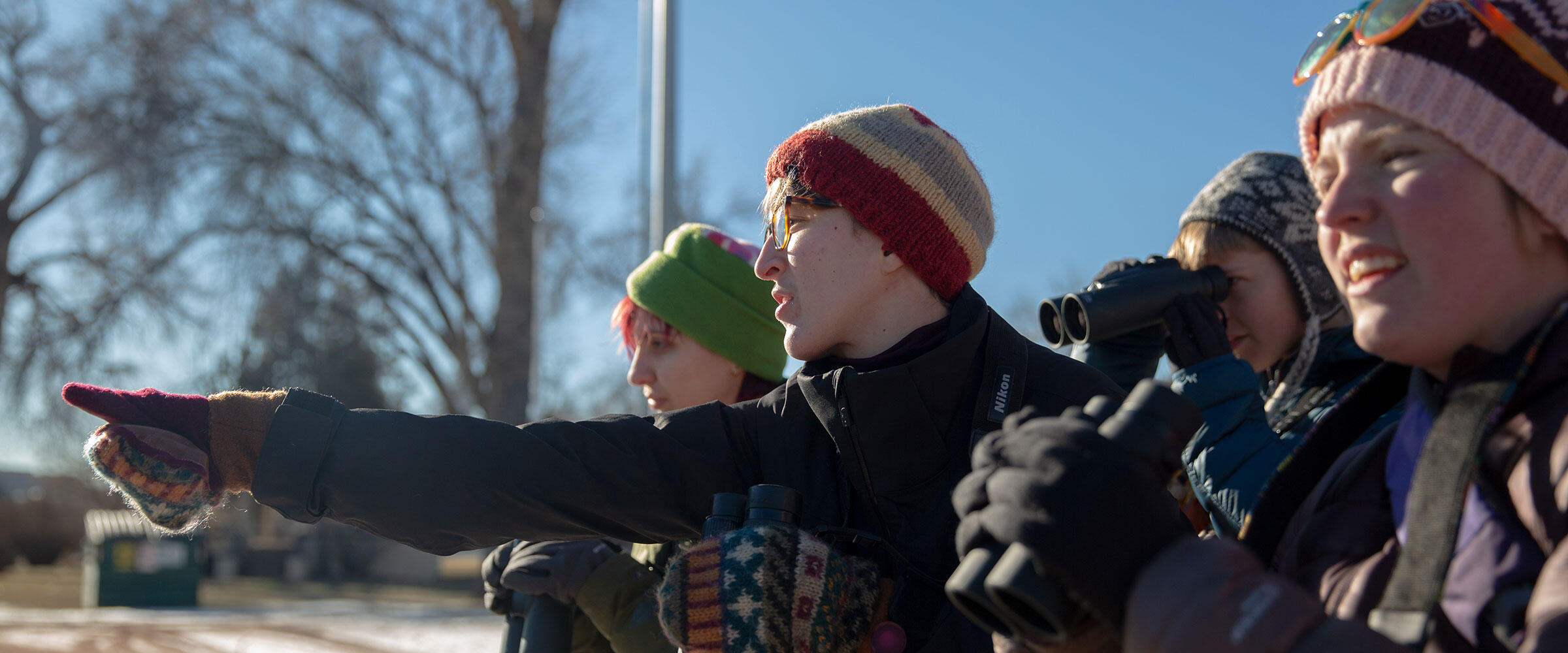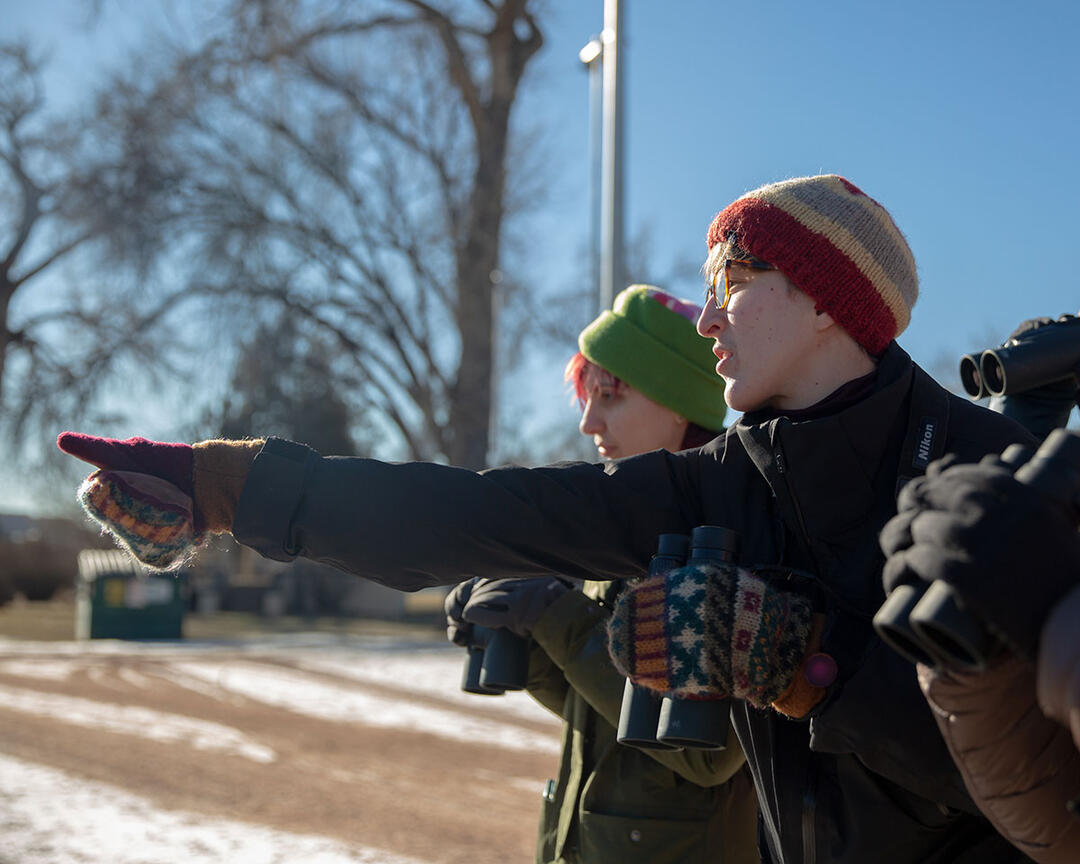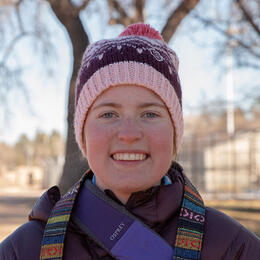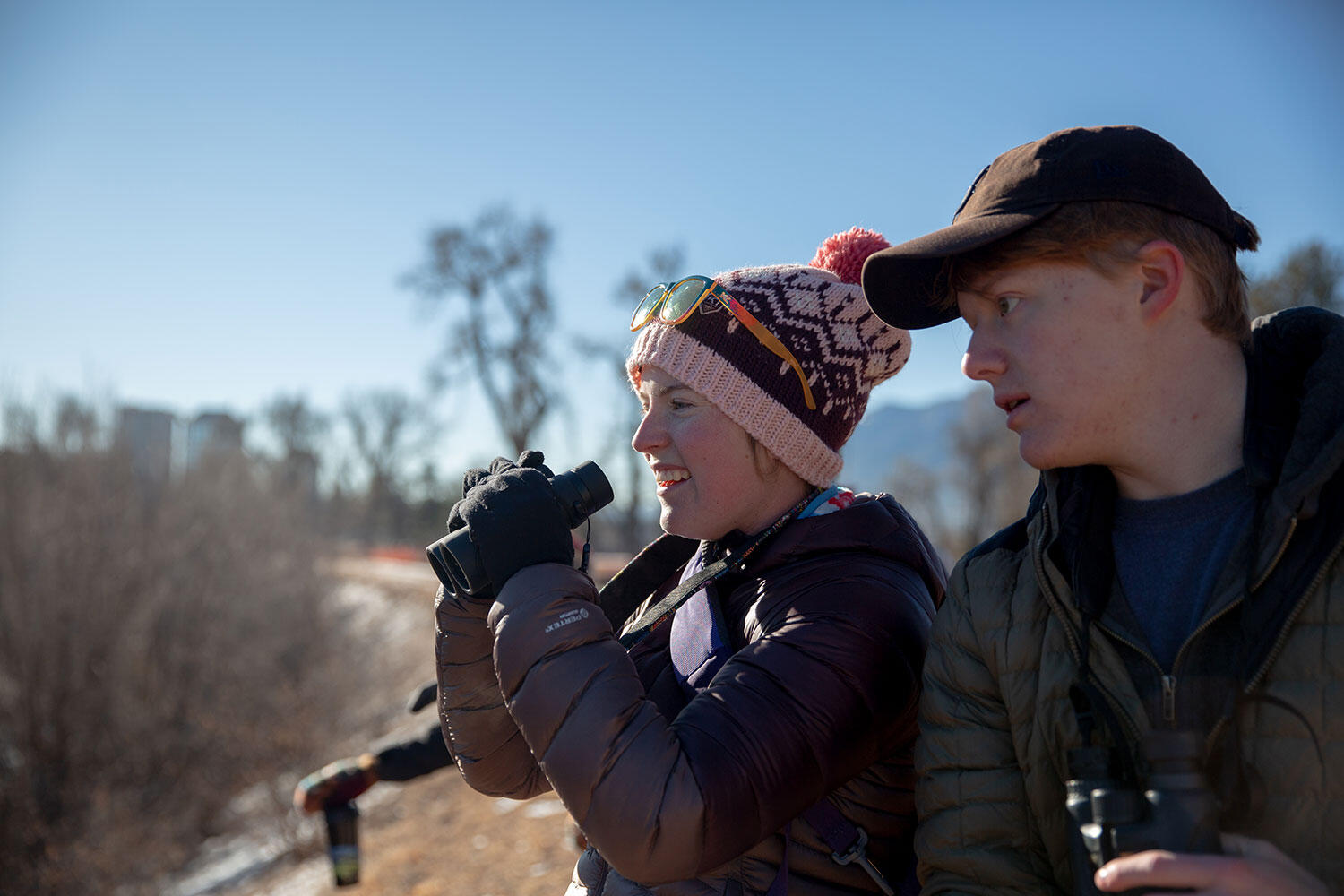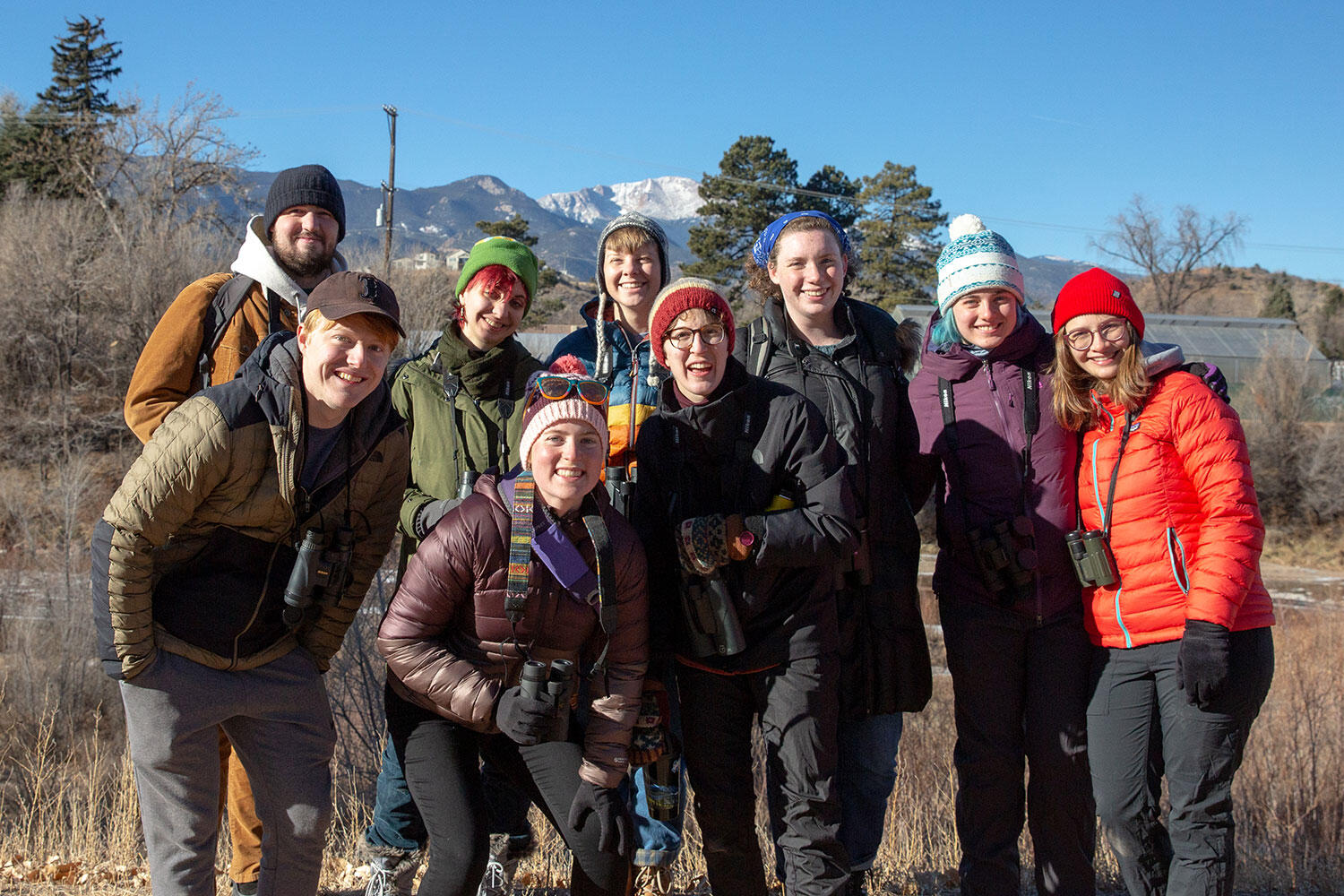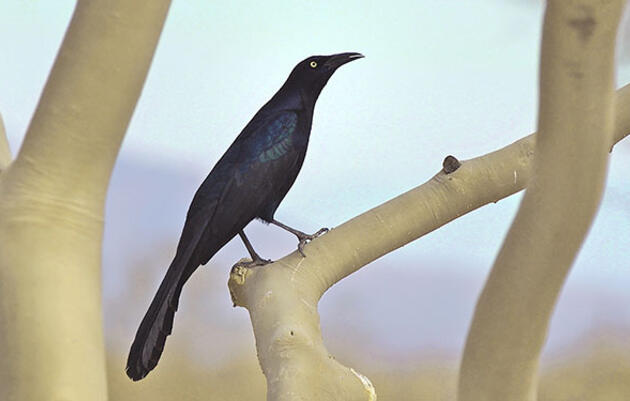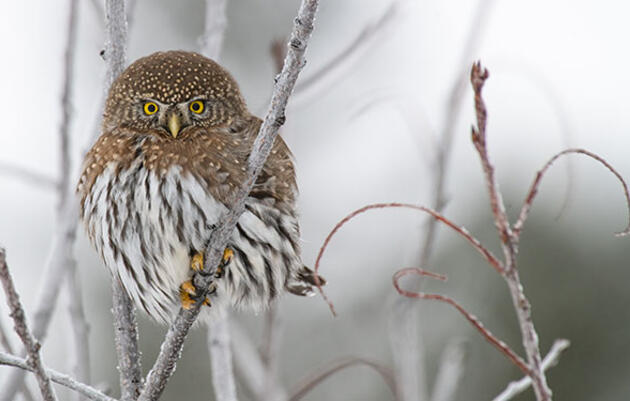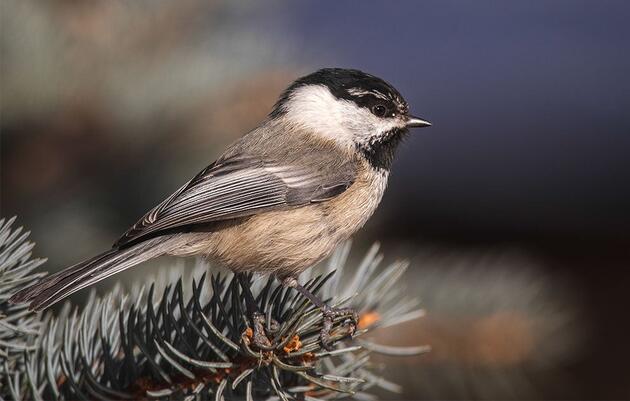The December morning of the 123rd Christmas Bird Count dawned clear and crisp—breath curled in thin, elegant whisps and drifted upward toward the expanse of a light blue sky. The stillness in the air was broken only by the sudden sprint of a squirrel darting across the street, or a soaring crow releasing a throaty caw. While, certainly, there was an appealing temptation to draw the blankets closer and fall back to sleep, the student birders of Tiger Audubon found the beckoning promise of this frigid morning to be too great of an opportunity to miss.
The bird count started out normally enough; somewhat awkward and shy introductions were shared amongst the ten members present, and pairs of loaner binoculars were distributed to those who requested them. But as the morning went on, things began to change. Like the warming of the surrounding air, interactions became more fluid, more excited, more vibrant, and it all started with sighting a group of five brilliantly boisterous Cedar Waxwings. All at once, ten pairs of binoculars went up, trained and untrained eyes alike. Soon, conversations about old homes, new homes, upcoming exams, and (of course) birds flowed back and forth in between stopping to watch and listen.
Tiger Audubon student birders recorded a total of 170 individuals and 19 species in the designated location over the course of two hours and five minutes, totaling about 2.37 miles on foot. An especially exciting sighting took place when the group paused at a bridge to take in the sunlight as one keen observer pointed out a pair of well-camouflaged Wilson’s Snipes. It took longer than usual to spot a group of charmingly rotund Dark-eyed Juncos, and it was also surprisingly deep into the count when three Northern Flickers popped out of some low-lying brush. One particularly memorable moment occurred when a Black-capped Chickadee and a Mountain Chickadee happened to simultaneously land on adjacent branches extending from the same tree, providing a rare opportunity for live side-by-side comparison.
All in all, the data collected from the 123rd Christmas Bird Count yielded some surprising trends across Colorado Springs. A total of 152 people participated as field observers and/or feeder watchers; 150 party miles were covered on foot; 375 miles were covered by car; and there was a total of 258 party hours for the 2022 count, the third-highest total in 73 years of the Colorado Springs CBC behind only 2020 and 2021. A whopping 17,110 individual birds were counted, which is considerably higher than the 73-year average of 11,586 individuals. Cassin’s Finches were particularly plentiful at a count of 101 individuals - this is the first triple-digit total for this species on the count since 1996. In contrast, the four Red-breasted Nuthatches recorded were the fewest since 1975. A Turkey Vulture was observed near the northwestern edge of the Colorado Springs count circle, marking only the second time since 1977 and the fourth time overall that this species has been recorded.
As the first in-person Christmas Bird Count in two years since the global pandemic, an overwhelming sense of camaraderie and friendship was restored amongst the students attending the count. Tiger Audubon, an Audubon Campus Chapter, was founded at Colorado College in the fall of 2019 by Mary Rudolph. Prior to COVID-19, the group enjoyed in-person activities such as Netflix bird movie nights, local birding trips, window collision monitoring, guest speakers, and more. Then, without warning, students had a mere week to pack up and leave campus. Little did they know, the following year and a half would present some of the greatest and most isolating challenges the Audubon chapter, and the world in general, would face.
The club continued virtual outreach via online bird count submissions, a lively bird photography Instagram page, and, of course, Zoom meetings. Since getting the green light to resume in-person activities safely, Tiger Audubon has been pursuing more ambitious projects, including attending local birding festivals, watching the Sandhill Crane migration in Nebraska, viewing a sage-grouse lek, restarting window collision monitoring, and more. Currently, the group is led by four co-chair student members: Lark, Lucy, Evan, and Holden, with Mary still stepping in for various events. Future plans for Tiger Audubon involve more birding trips, on-campus conservation initiatives, and, rumor has it, partaking in the 122nd Christmas Bird Count!

